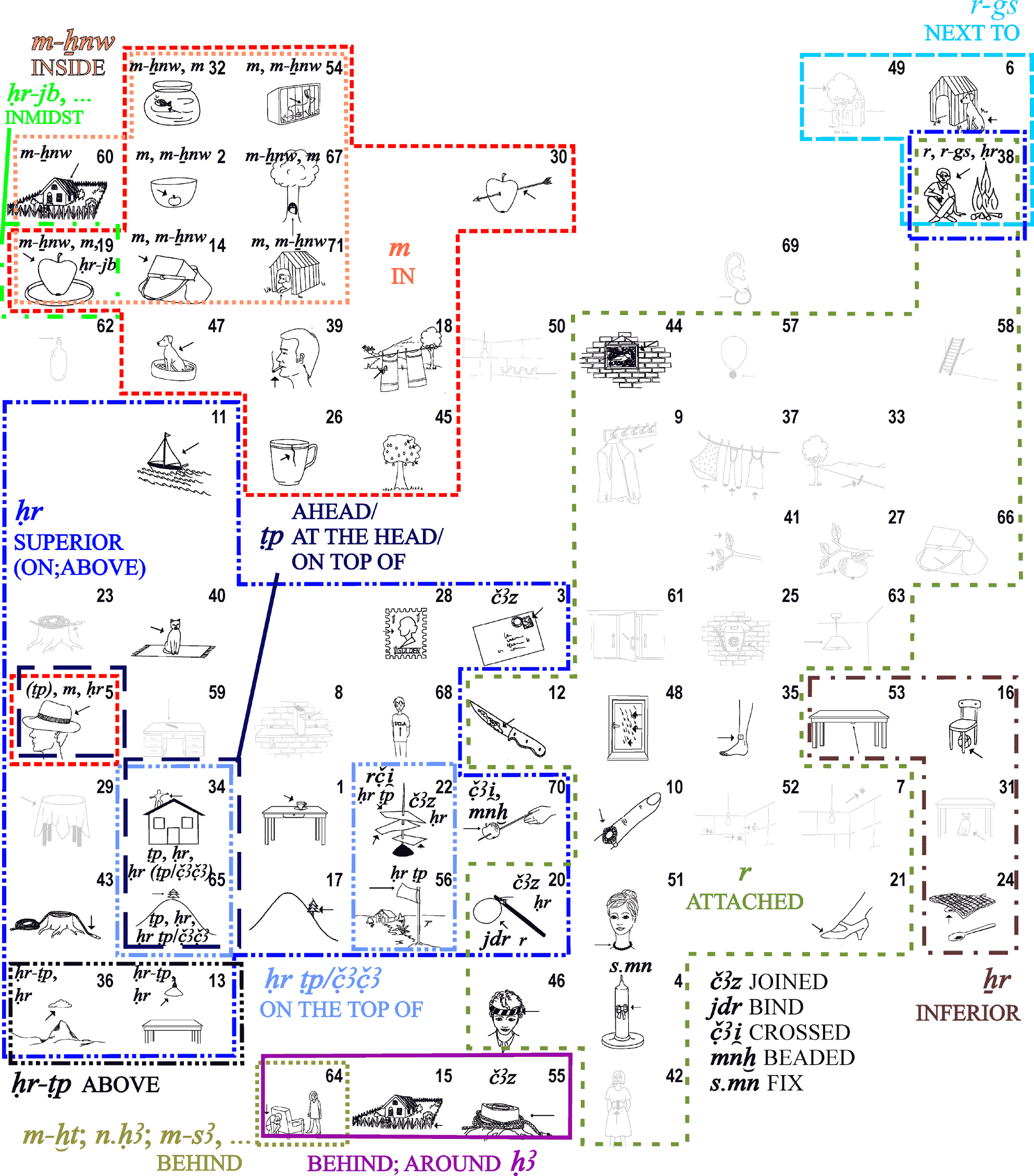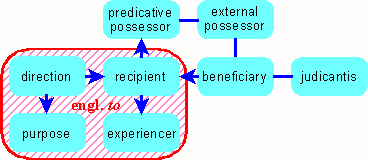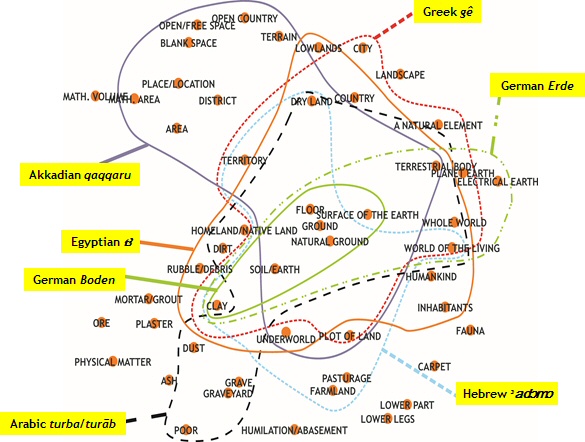Termine/Timetable:
1. Einführung/Introduction: Do/Thu, 28.4., 13–18 Uhr
2. Einführung/Introduction II: Mi/Wed, 14.7., 13–16 Uhr
In diesem Forschungsworkshop wird zunächst in die Theorie und Praxis von sog. Semantic Maps eingeführt.

Semantic Map of Static Spatial Prepositions in Hieroglyphic Ancient Egyptian and English | Autor: Daniel Werning
Dabei handelt es sich um Diagramme, die Bedeutungsbeziehungen und/oder den von bestimmten Wörtern abgedeckten Bereich von Bedeutungen visualisieren. Angesprochen werden u.a. Vor- und Nachteile der Methode, aktuelle Diskussionen in diesem Forschungsfeld, verschiedene Typen von Semantic Maps und deren Verwendung in verschiedenen linguistischen Forschungsrichtungen.
Workshop-Sprachen sind Deutsch und Englisch. Optional kann auch nur die Workshop-Einführung besucht werden.
Inhalt
1. Semantic Maps: ein Überblick
2. Wie Semantic Maps funktionieren
3. Vor- und Nachteile von Semantic Maps
4. Grammatische Semantic Maps: Synchronie und Diachronie
5. Lexikalische Semantic Maps
6. Sprachkorpus
7. Erstellung einer Semantic Map
Lernziele
1. Die TeilnehmerInnen kennen die zentralen Fragen der Semantic Map-Forschung.
2. Die TeilnehmerInnen können eigene Semantic Maps auf Grundlage existierender (synchroner) Semantic Maps und zusätzlicher typologischer Belege kreieren.
3. Die TeilnehmerInnen wissen, wie sie neue, eigene Forschung auf diesem durchführen können.
Project workshop “Visualizing Relations of Meanings on Semantic Maps” / Final Meeting
The purpose of this workshop is to introduce the participants to the model of Semantic Maps, which addresses one of the most intriguing subjects in the linguistic tradition, that of the multiplicity of word meanings. The participants will become familiar with the advantages as well as the shortcomings of the method, the state-of-the-art discussion in this area of research, the different types of maps, how semantic maps are used in a range of linguistic studies, etc.
Course content
1. Semantic maps: an overview
2. How semantic maps work
3. Advantages and disadvantages of semantic maps
4. Grammatical semantic maps: synchrony and diachrony
5. Lexical semantic maps
6. Language sampling
7. How to generate a semantic map
Learning outcomes
1. Participants will know what the central questions in the semantic map research area are
2. Participants will be able to construct their own semantic maps on the basis of existing synchronic semantic maps and of additional typological evidence
3. Participants will know how to conduct original research in this emergent field of study


